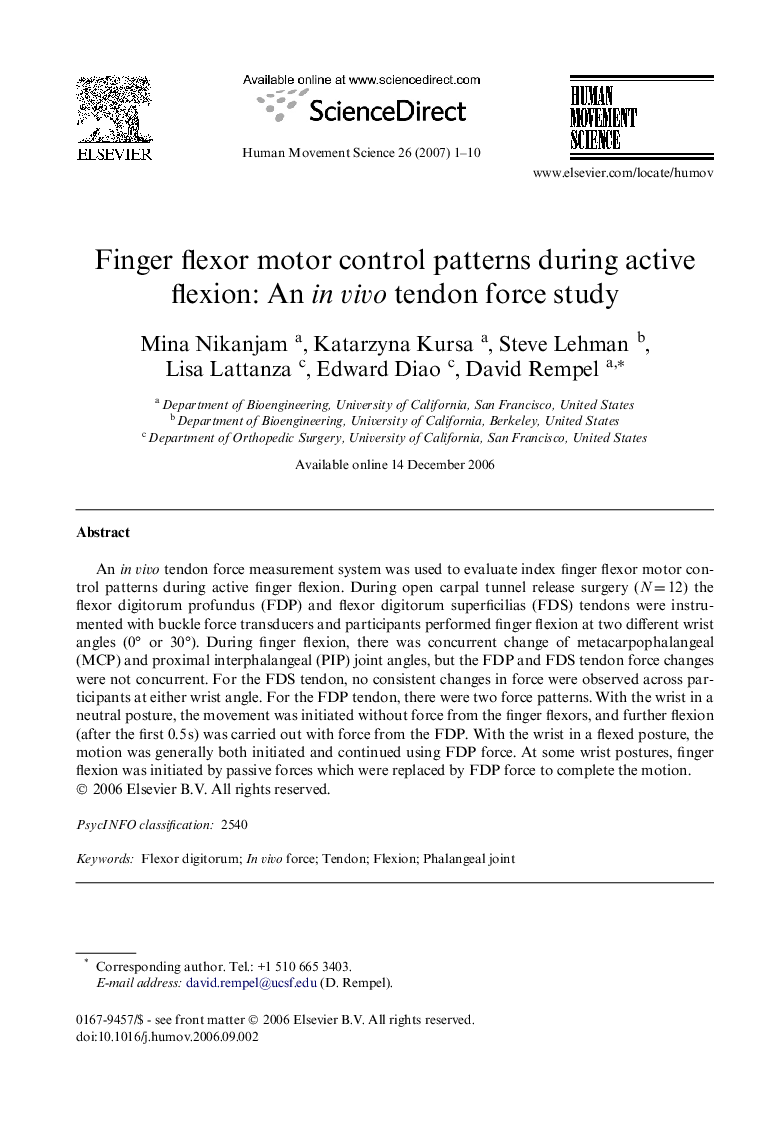| Article ID | Journal | Published Year | Pages | File Type |
|---|---|---|---|---|
| 928862 | Human Movement Science | 2007 | 10 Pages |
An in vivo tendon force measurement system was used to evaluate index finger flexor motor control patterns during active finger flexion. During open carpal tunnel release surgery (N = 12) the flexor digitorum profundus (FDP) and flexor digitorum superficilias (FDS) tendons were instrumented with buckle force transducers and participants performed finger flexion at two different wrist angles (0° or 30°). During finger flexion, there was concurrent change of metacarpophalangeal (MCP) and proximal interphalangeal (PIP) joint angles, but the FDP and FDS tendon force changes were not concurrent. For the FDS tendon, no consistent changes in force were observed across participants at either wrist angle. For the FDP tendon, there were two force patterns. With the wrist in a neutral posture, the movement was initiated without force from the finger flexors, and further flexion (after the first 0.5 s) was carried out with force from the FDP. With the wrist in a flexed posture, the motion was generally both initiated and continued using FDP force. At some wrist postures, finger flexion was initiated by passive forces which were replaced by FDP force to complete the motion.
